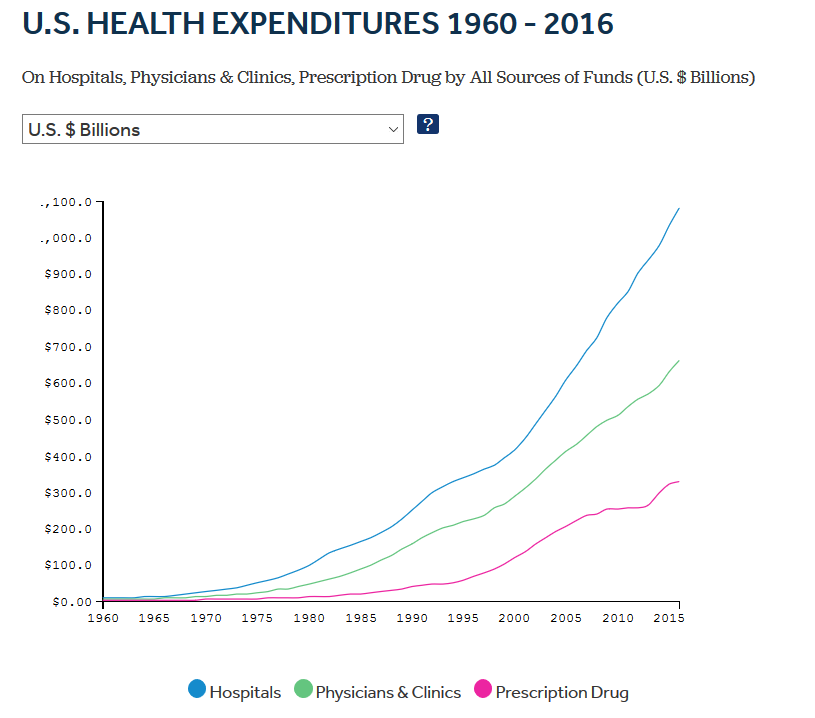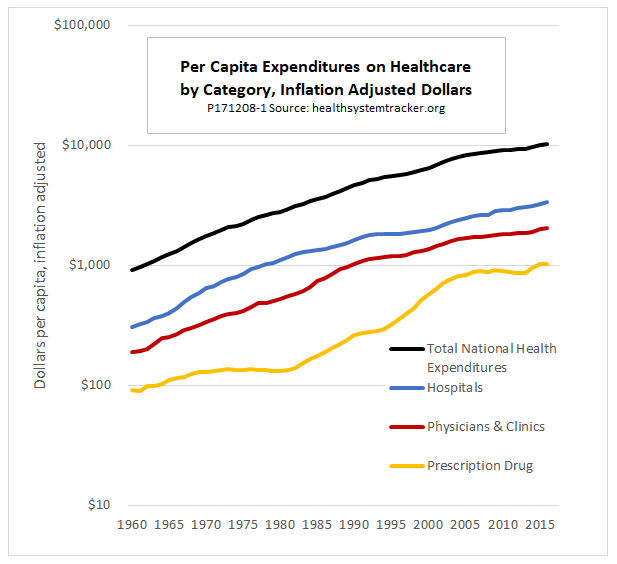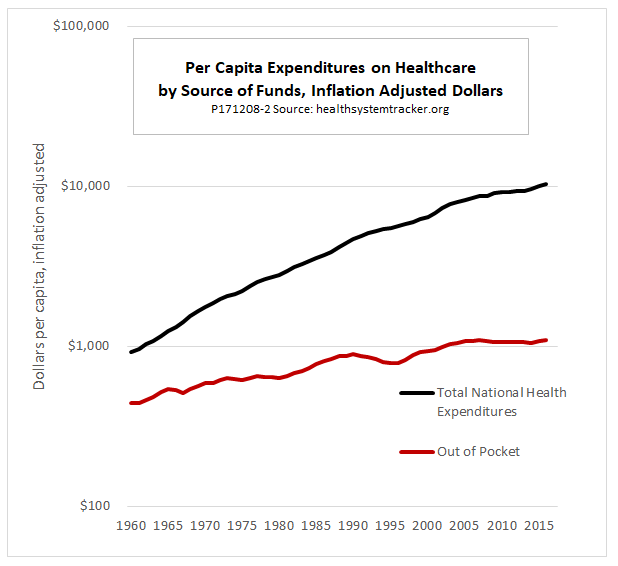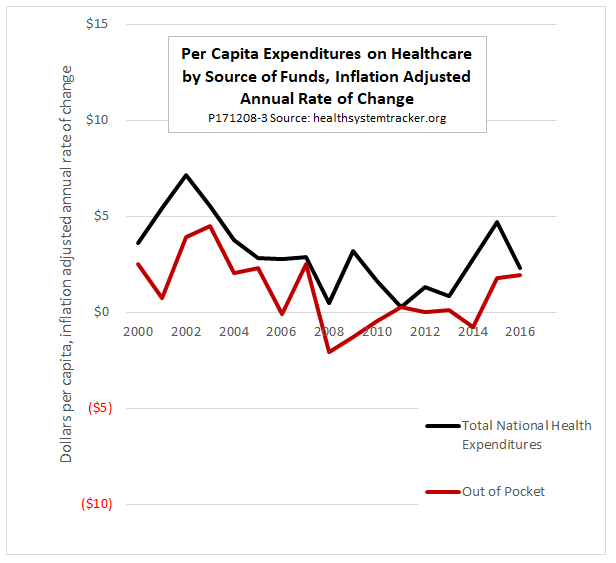The Peterson Center on Healthcare and the Kaiser Family Foundation have released an updated version of their interactive Health Spending Explorer. It is a fascinating place to spend a little time. It does not take long to uncover both alarming and reassuring trends.
The headline graphic that pops up when you visit the site’s interactive home page falls in the alarmist category, with its depiction of rocket-like growth of healthcare expenditures:
However, the same trends, served up differently, actually look reassuring. Consider the following version, which shows the same data in inflation-adjusted per capita terms, with the vertical axis changed to a logarithmic scale, so that equal slopes show equal percentage rates of change. It suggests that although healthcare spending continues to grow, its rate of growth has actually slowed a bit in recent years:
You can break total expenditures down in different ways, if you like. Here is a chart that focuses on the share of healthcare expenditures that are paid out of pocket:
Note that the trend of out-of-pocket costs has been largely flat since the early 2000’s, even as total expenditures have continued to rise. For a better idea of what is going on, we can zoom in on recent years and change the vertical scale from inflation-adjusted dollars to annual rates of change:
Cyclical effects presumably played a major role in producing the zero or negative growth in out-of-pocket healthcare spending from 2008 to 2014. Enrollment in Medicaid, which has modest out-of-pocket requirements, soared as unemployment rose early in the recession. At the same time, economic pressures undoubtedly induced some people to postpone or forgo needed treatments. After 2014, out-of-pocket expenditures began to rise again. Even without policy changes, some increase would have been expected as the economy recovered. However, part of the increase is presumably due to the effects of the ACA, which came fully into force in 2014. The ACA increased the total number of people covered by health insurance, increasing total expenditures, but it left many those new enrollees with substantial out-of-pocket costs.



